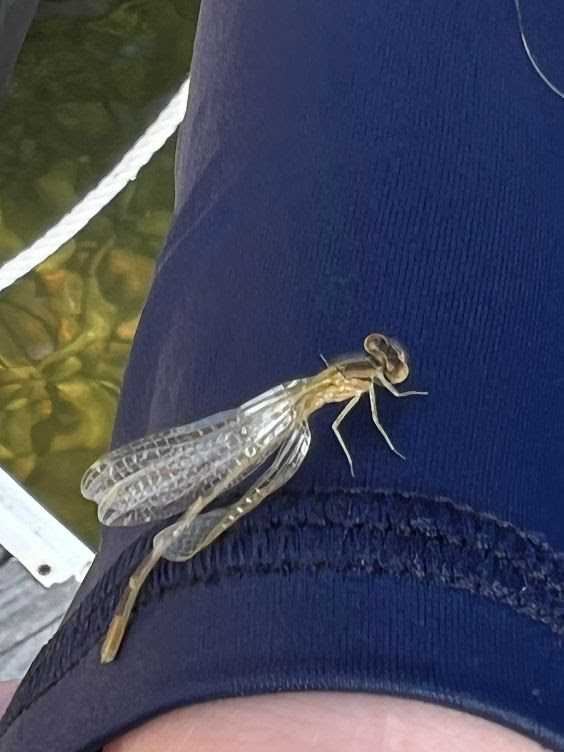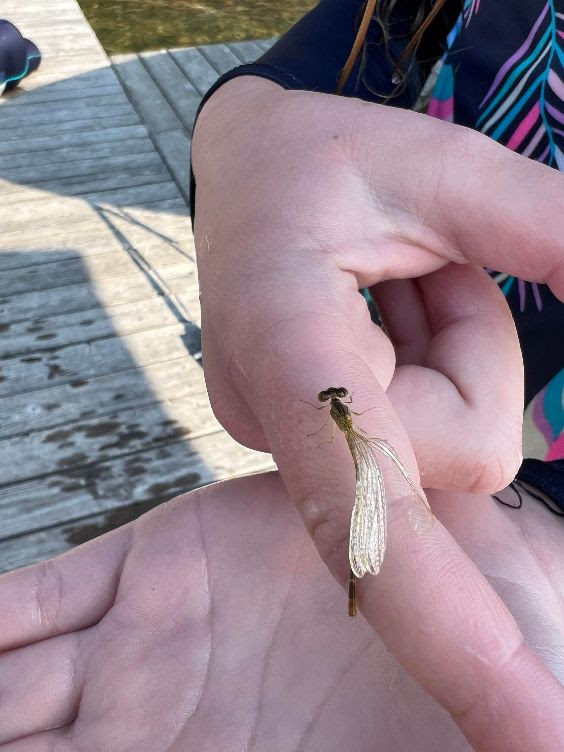We believe this damselfly may have just emerged, as the the wings do not look fully “inflated” and dried. Before taking to the sky, damselflies, and their close relatives, the dragonflies, develop in still water such as ponds, lakes, marshes, and bogs. The nymphs are predatory like their adult counterparts, capturing aquatic invertebrates, with larger species even capturing small fish and tadpoles. They typically use a sit-and-wait technique in combination with a surprising weapon. When prey is in striking distance, nymphs rapidly extend their arm-like lower lips (labia), which have grasping jaws at their tips.
After undergoing nine to 12 molts, they undergo partial metamorphosis, the mature larvae clambering out of the water (usually at night) and the winged adults emerging from their split exoskeletons.
Size: Most damselfly adults are about 1 ½” long, but some can be up to 2″
Photos by: Jean Wilkerson Woessner on 8/20/22 near Flathead Lake, MT

